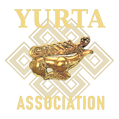Desert and xeric shrublands
Although deserts may seem lifeless many species have evolved special ways to survive there, humans included. Deserts and xeric shrublands form one of the largest terrestrial biome, covering 19 % of Earth's land surface with areas characterized by receiving less than 250 millimetres on average, the marked seasonality of water, its temperature extremes and the scarcity of arboreal vegetation.



